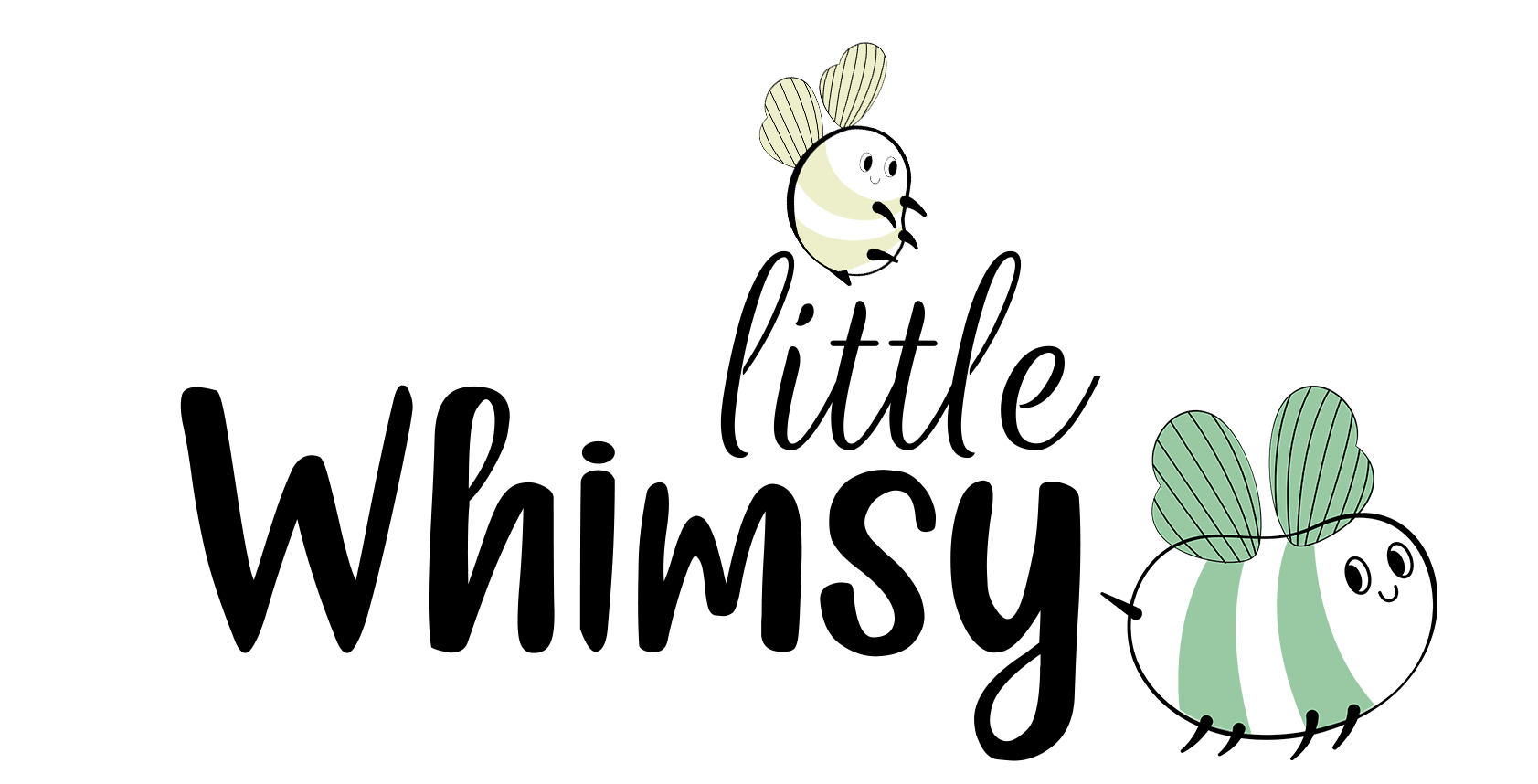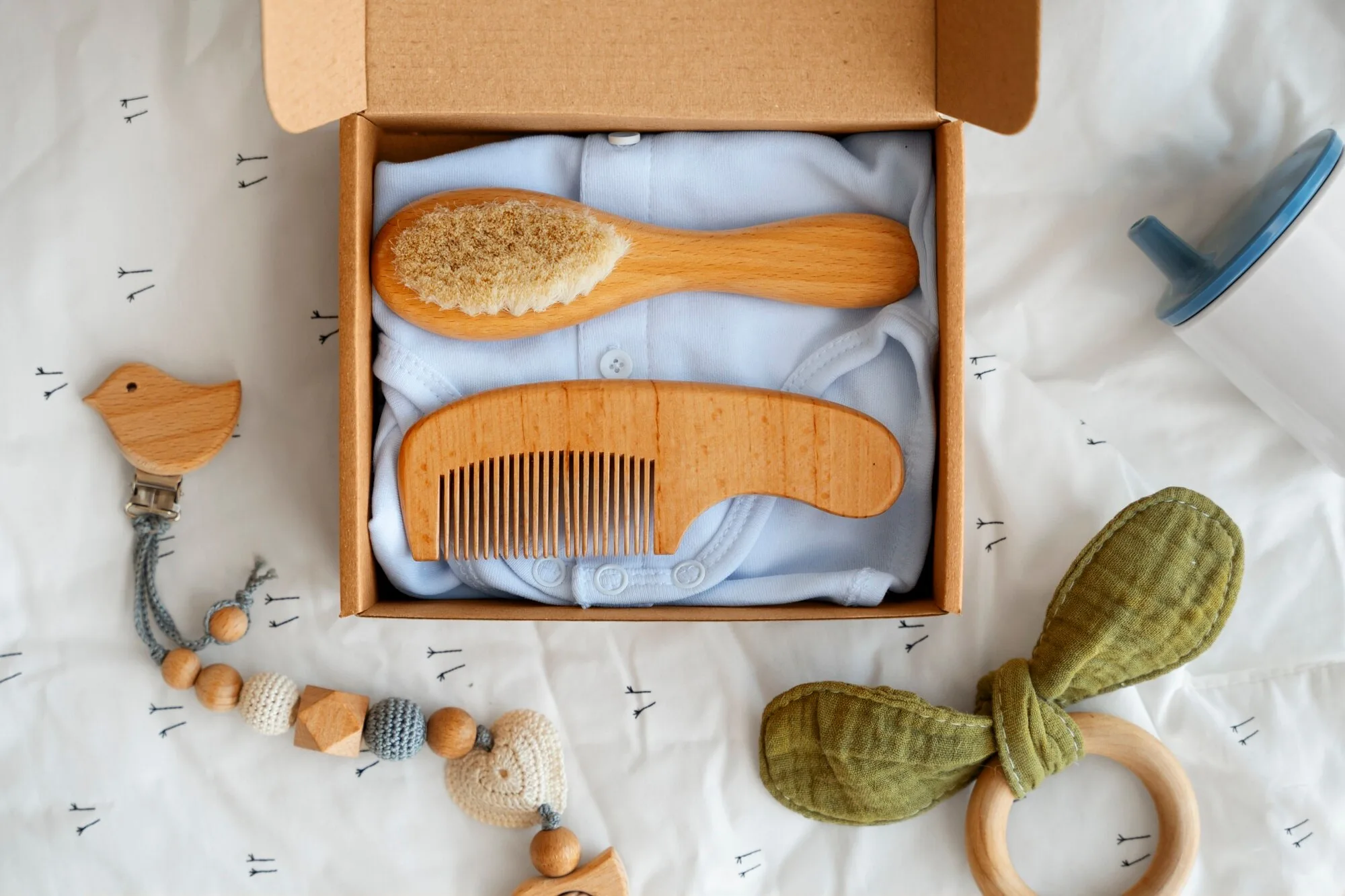 Introduction: Why Choosing the Right Newborn Clothes Matters
Introduction: Why Choosing the Right Newborn Clothes Matters
The first few months of a baby’s life involve rapid growth, sensitive skin, and constant changes, making the selection of appropriate clothing a critical decision for parents and caregivers. Newborns possess delicate skin that is more vulnerable to irritation, rashes, and allergies compared to older children or adults. The fabrics and designs chosen not only affect the infant’s immediate comfort but also play a role in overall health and well-being.
The material of newborn clothing is a key consideration, as it directly touches the infant’s skin throughout the day. Natural, breathable fibers like organic cotton or bamboo are often preferred for their softness and ability to minimize skin irritation. On the other hand, synthetic materials or those treated with harsh dyes and chemicals may introduce potential irritants that could harm sensitive skin. Parents should also ensure that the clothing is free from harmful substances, such as azo dyes or pesticides, which can pose health risks.
Another important factor is functionality and design. Newborns grow quickly and experience frequent diaper changes, requiring clothing that is both easy to put on and take off. Features like snap closures, adjustable sizing, and wide neck openings allow for greater convenience while ensuring a secure fit without discomfort. Additionally, attention to safety details—such as avoiding small buttons, loose accessories, or drawstrings that could be choking hazards—further underscores the importance of thoughtful clothing selection.
Sustainability also enters the conversation as many parents seek environmentally friendly and ethically produced options. Choosing clothes from sustainable sources not only reduces ecological impact but aligns with a growing demand for safer, toxin-free manufacturing processes. By understanding how material, design, and sustainability interconnect, parents can ensure their newborn’s clothing supports comfort, safety, and health from the very beginning.
Essential Features to Look for in Newborn Clothing
When selecting clothing for newborns, parents must prioritize comfort, safety, and functionality. Understanding the essential features to look for helps ensure the well-being of the baby while making daily routines more manageable.
1. Fabric and Material
Opting for breathable, soft, and hypoallergenic fabrics like organic cotton or bamboo is vital. These materials are gentle on a newborn’s sensitive skin and help reduce the risk of rashes or irritation. Avoid synthetic fabrics that may trap heat or cause discomfort, especially for infants prone to eczema or allergies.
2. Ease of Dressing
Newborns require frequent diaper changes, making ease of dressing an essential consideration. Look for clothing with snap buttons along the front or legs, envelope necklines, or side ties. These features eliminate the need to pull garments over a baby’s head, reducing discomfort and making dressing simpler for caregivers.
3. Safety Features
Safety considerations are non-negotiable in newborn clothing. Avoid items with small buttons, decorative bows, or embellishments that could become choking hazards. Ensure garments lack sharp zippers or tags that could irritate the skin. Flame-resistant materials should also be prioritized for sleepwear, adhering to safety standards.
4. Adjustable Sizing
Babies grow quickly, so clothing designed with some adjustability is beneficial. Look for garments with stretchable or expandable features, such as elastic waistbands or adjustable fastenings. This extends their usability while accommodating sudden growth spurts.
5. Season-Appropriate Design
Selecting clothes suitable for the prevailing climate is crucial. For winter, layer-friendly options like onesies and sleepers made from fleece or wool can provide warmth. In warmer seasons, breathable and lightweight materials with minimal layering prevent overheating.
By recognizing these key features, caregivers can ensure that a newborn’s wardrobe is both practical and safe.
The Importance of Fabric: Comfort, Durability, and Safety
When it comes to clothing for newborns, the choice of fabric holds significant importance since their delicate skin demands exceptional care. Certain fabrics provide a balance of comfort, durability, and safety, ensuring the well-being of the baby while also meeting the practical needs of parents. Understanding fabric properties helps make informed decisions and ensures that each garment is appropriate for a newborn’s sensitive requirements.
Comfort is an essential factor in selecting fabrics for newborn clothing. Natural fabrics like cotton and bamboo are widely recommended due to their softness and breathability. They allow proper air circulation, helping to regulate body temperature and reduce the likelihood of skin irritation. For particularly sensitive skin, certified organic cotton can further minimize exposure to harsh chemicals or dyes.
Durability is another key consideration, as newborn clothes undergo frequent washes to maintain hygiene. Fabrics that maintain their quality after multiple washes are preferred, ensuring that they do not lose their texture or shape. Additionally, choosing materials resilient to wear and tear, yet lightweight enough for daily use, supports long-term functionality and convenience.
Safety plays a vital role in safeguarding the health of newborns. Parents should avoid fabrics treated with flame retardants, formaldehyde, or synthetic dyes, as these substances can cause allergic reactions or adverse effects on sensitive skin. A common recommendation is to look for fabrics certified by standards such as OEKO-TEX® or GOTS (Global Organic Textile Standard), which ensure that the materials have been tested for harmful substances and produced sustainably.
Selecting the appropriate fabric involves balancing these three elements to ensure a harmonious combination of practicality and protection. Paying close attention to fabric choice enhances the overall quality of a newborn’s wardrobe and ensures their comfort and safety.
Sizing Guide: Finding the Perfect Fit for Your Newborn
Choosing the right size for newborn clothing ensures both comfort and safety. Newborns grow quickly, and sizing can vary between brands, making it essential to understand how to measure and select clothing that fits well without restricting movement or causing discomfort. The following guidance provides key points to help parents navigate sizing for their little ones.
Understand Newborn Sizes
Most brands categorize newborn clothing by weight and length. Typically, the “newborn” size is designed for babies weighing between 5 and 8 pounds and measuring up to 21 inches in length. For premature or larger babies, sizes labeled as “preemie” or “0–3 months” may be more appropriate. Always refer to the brand’s specific size chart rather than relying on standard labels, as dimensions can differ significantly.
Proper Fit Matters
Clothing should neither be too tight nor too loose. Oversized outfits can interfere with movement, while snug fits may cause discomfort or restrict circulation. Key areas to check for fit include the neckline, leg openings, and armholes. Ensure that no part of the garment leaves indents or red marks on the skin after wear. Avoid any pieces with features that pinch or irritate, such as tight elastic bands or scratchy seams.
Measure Accurately
Parents can measure their newborn by using a soft tape measure. For length, measure from the top of the head to the heel while the baby lies flat. For weight, using an accurate baby scale provides a reliable measurement. Regularly recheck as newborns grow rapidly in the first months, often outgrowing clothing in weeks.
Choose Practical Styles
Opt for clothing with adjustable features, such as snaps or drawstrings, to accommodate growth spurts. Expandable shoulders or stretchy fabrics can ensure a longer-lasting fit without compromising comfort. Minimalist designs with fewer fasteners will also be easier to dress and undress.
By following these considerations, caregivers can ensure a secure and comfortable fit for their newborn while planning for inevitable growth.
Must-Have Clothing Items for Every Newborn Wardrobe
The foundation of a newborn wardrobe should focus on comfort, functionality, and safety while ensuring the fabrics align with sensitive, delicate skin. Selecting the right clothing items also contributes to efficient caregiving, offering convenience for parents during frequent changes and cleanups.
Essential Core Pieces
- Onesies or Bodysuits: These versatile staples serve as a base layer or standalone outfit. Opt for ones made from organic cotton or bamboo blends, as these fabrics are breathable and soft against fragile skin. Look for styles featuring snap closures for easy diaper changes.
- Sleepers or Rompers: One-piece outfits with foot coverage are ideal for keeping newborns cozy during naps or bedtime. Avoid zippers with rough edges and prioritize options with inverted zips for easy nighttime access.
- Swaddles and Sleep Sacks: Swaddle blankets made from lightweight, natural fibers help newborns feel secure and comfortable. Sleep sacks are a safer alternative to loose blankets, reducing risks associated with overheating or restricted breathing.
- Hats: Newborns lose body heat quickly through their heads. A soft, non-irritating hat ensures adequate warmth in cooler environments. Look for seamless, hypoallergenic options to avoid discomfort.
- Mittens: Scratch mittens are crucial to prevent newborns from scratching their sensitive skin. Ensure they are snug enough to stay on but do not constrict blood flow.
Seasonal Additions
- Lightweight Jackets or Cardigans: For cooler months, layering with natural-fiber jackets provides warmth without causing irritation. Avoid bulky items that hinder mobility.
- Socks and Booties: These help maintain warmth in colder weather, especially for babies not yet wearing shoes. Opt for designs with elastic edges to keep them secure.
A well-curated newborn wardrobe integrates these functional and safe essentials, prioritizing both the baby’s comfort and parents’ convenience in daily routines.
Seasonal Considerations: Dressing Your Baby for Different Weather Conditions
Dressing a newborn appropriately for different weather conditions is essential to ensure their comfort and safety. Babies cannot regulate their body temperature as effectively as adults, making it critical to adapt their clothing to suit seasonal changes. Proper planning helps keep them cozy in winter and cool during summer without risking overheating or chilling.
During winter, layering is key to keep your newborn warm. Opt for a soft cotton or organic wool base layer to wick moisture away from their skin. Add an insulating layer, such as fleece or knitted clothing, and finish with an outer layer like a snowsuit or thick jacket. Covering extremities is equally vital; fleece-lined mittens, booties, and a snug hat shield tiny hands, feet, and ears from cold air. Always ensure the layers are not overly bulky to avoid restricting movement or making car seat straps unsafe.
In summer, lightweight and breathable fabrics like organic cotton or bamboo are ideal. A single layer of clothing, such as a short-sleeved onesie, may suffice indoors. When outdoors, consider a wide-brimmed hat to protect your baby’s sensitive skin from direct sunlight. Avoid dressing in synthetic fabrics that can trap heat; instead, stick to loose-fitting garments. Keep an eye on signs of overheating, such as flushed cheeks or fussiness, and adjust clothing as needed.
In transitional seasons like spring and fall, layering becomes a practical approach. Use removable pieces like cardigans or light jackets, ensuring flexibility with changing temperatures. On cooler days, dress the baby in long-sleeved outfits, while breezy days may call for lighter wear.
Always gauge your baby’s comfort by feeling the back of their neck or chest, as hands and feet may feel cold even when the baby is warm. This practice ensures their temperature stays consistent year-round.
How Many Clothes Do You Really Need for a Newborn?
Determining the right amount of clothes for a newborn is essential for practicality, hygiene, and comfort. Newborns typically require frequent clothing changes due to spit-ups, diaper leaks, and general messes. However, over-purchasing can be wasteful and result in unused outfits as babies outgrow their clothing quickly within the first few months.
A practical newborn wardrobe should include the essentials that cater to their daily needs. Commonly recommended items are:
- Onesies or Bodysuits: At least 7-10 pieces are recommended. These are versatile, easy to layer, and work well for both daytime and sleep.
- Sleepers or Footed Pajamas: About 5-7 pieces are adequate, as they are worn frequently during naps and nighttime.
- Socks or Booties: A minimum of 5 pairs to keep the baby’s feet warm, especially if they are not wearing footed clothing regularly.
- Mittens and Hats: 2-3 pairs of mittens help prevent newborns from scratching themselves. Additionally, 2 lightweight hats for indoor use or 1 thicker hat for colder weather should suffice.
- Swaddle Blankets or Sleep Sacks: 2-3 items are useful for safe sleeping and keeping the baby secure and comfortable.
- Outfits for Outings: Depending on lifestyle, 3-5 fancier outfits may be necessary for visits, photos, or special occasions.
It is also advisable to plan for seasonal needs. If the baby is born during colder months, an extra layer such as a warm jacket or bunting bag may be required. For warmer climates, lightweight and breathable fabrics are essential to prevent overheating.
Frequent laundering and a baby’s rapid growth make buying in moderation crucial. Parents should also consider hand-me-downs or second-hand clothing as a sustainable option to reduce waste and expense. Finally, as each newborn is unique, adjustments based on individual circumstances may be needed, such as medical conditions or environmental factors.
The Best Brands and Stores for Quality Newborn Clothes
When choosing clothes for a newborn, selecting reputable brands and stores ensures quality, safety, and sustainability. There are numerous options that align with these priorities while offering a variety of styles and designs.
Trusted Brands for Newborn Clothing
- Hanna Andersson: Known for its organic cotton materials, Hanna Andersson creates gentle, hypoallergenic garments for babies. The brand emphasizes durability and sustainable practices.
- Burt’s Bees Baby: A leader in organic babywear, Burt’s Bees Baby provides soft, breathable clothing made from GOTS-certified organic cotton. Their simple, classic designs prioritize comfort.
- Monica + Andy: Offering non-toxic, organic baby clothes, Monica + Andy is renowned for its well-crafted essentials and adorable prints. Every piece undergoes rigorous testing to meet safety standards.
- Kyte Baby: Specializing in bamboo-based fabrics, Kyte Baby is celebrated for its ultra-soft textures. The brand also focuses on eco-friendly production and dyes free of harmful chemicals.
- Primary: This brand is popular for its vibrant, solid-colored basics made without labels or excessive embellishments. Their commitment to safe and sustainable kids’ clothing ensures excellent quality.
Stores Offering Quality Selections
- Crate & Kids: This store curates a wide range of organic, ethically sourced baby clothes. Their selection includes trusted brands with a focus on sustainability.
- SpearmintLOVE: A boutique-style online retailer, SpearmintLOVE features a collection of premium clothing options from various safe, eco-friendly brands.
- Nordstrom Baby: With a reputation for high standards, Nordstrom offers handpicked clothing lines that emphasize both safety and style for newborns.
- Baby Mori: Baby Mori delivers soft, responsibly sourced clothing made from organic cotton and bamboo. They also provide durable and thoughtfully designed essentials families can rely on.
Aligning with these recommendations simplifies the process of finding newborn clothing that marries safety with sustainability.
Practical Tips for Organizing and Storing Baby Clothes
Properly organizing and storing baby clothes can save time, reduce stress, and ensure longevity for each garment. Babies grow quickly, leading to an influx of clothing in various sizes, styles, and seasonal needs. Maintaining an efficient system not only supports daily routines but also keeps clothing in optimal condition for future use.
1. Sort by Size and Season
Divide clothes into categories based on size ranges, such as newborn (0-3 months), infant (3-6 months), and so on. Consider setting aside specific storage for seasonal outfits to avoid unintentional clutter. Lightweight clothing for summer and heavier layers for winter can be organized separately, ensuring what’s needed is always accessible.
2. Use Drawer Dividers
Utilize drawer dividers or small containers within drawers to separate items such as onesies, socks, bibs, and hats. This will prevent tiny garments from tangling together and make it easier to find what’s required. Labeling each section—either inside or on the drawer—provides clarity and ensures consistency.
3. Invest in Clear Storage Bins
Use clear, labeled storage bins for clothes that your baby has outgrown or is yet to grow into. Transparent containers allow for quick identification of contents without the need to rummage. Ensure bins are airtight to prevent dust, moisture, and pests from damaging the fabric.
4. Repurpose and Rotate
Regularly review clothes to rotate items your child frequently wears to the front of drawers or closets. Repurpose or donate outgrown outfits to free up space. Keeping only essential and usable garments prevents overcrowding.
5. Protect Delicate Fabrics
Use breathable garment bags or acid-free tissue paper to store baby clothes made of delicate fabrics. Such methods maintain the quality of heirloom pieces or special occasion outfits, ensuring they are well-preserved for future use or sentimental value.
6. Hanging vs. Folding
Hang larger or special outfits using baby-sized hangers to prevent wrinkling. Everyday items, like pajamas or onesies, can be folded neatly. Prioritize folding material-sensitive garments, like knits, to avoid losing their shape.
By incorporating these strategies, parents can maintain an organized, efficient system that ensures baby clothes are properly cared for, easy to access, and ready for use.
Eco-Friendly and Sustainable Options for Newborn Clothing
When selecting clothing for newborns, eco-friendly and sustainable materials contribute not only to the health of the baby but also to the well-being of the planet. Parents can choose from a variety of sustainable options that are safe for sensitive newborn skin and responsibly made. Prioritizing such materials ensures lower environmental impact while offering long-lasting quality.
Natural fibers are among the most recommended choices for sustainable newborn clothing. Organic cotton stands out as a top option due to its chemical-free cultivation and hypoallergenic properties. It is gentle against a baby’s delicate skin and significantly reduces exposure to harmful pesticides or fertilizers. Additionally, bamboo fabric is another eco-friendly choice, celebrated for its softness, breathability, and natural antibacterial qualities. Its quick regeneration cycle makes it one of the most sustainable materials available.
For parents seeking a luxurious and ultra-soft option, organic merino wool offers excellent temperature regulation, keeping infants warm in cooler weather and cool in warmer temperatures. This wool is both biodegradable and free from harsh chemical treatments. Another sustainable material gaining attention is hemp fabric, known for its durability, breathability, and low environmental impact during cultivation.
Selecting clothing from brands that adhere to sustainable practices further solidifies environmentally conscious choices. Certifications like GOTS (Global Organic Textile Standard) or Fair Trade Certified ensure ethical production methods, from sourcing raw materials to manufacturing processes.
Additionally, purchasing second-hand or upcycled newborn clothing offers a practical way to reduce waste. Families can explore local thrift shops, exchange hand-me-downs, or participate in clothing swaps. These options extend the lifecycle of garments, cutting down on the demand for new production.
Through careful material selection, certification awareness, and conscious shopping, parents can create a wardrobe that supports sustainability while offering unparalleled comfort for their newborn.
Dressing a Newborn: Safety and Comfort Tips
Dressing a newborn requires careful consideration to ensure both safety and comfort. Newborns have delicate skin and are more sensitive to external factors like temperature, fabric materials, and tight clothing. Following a few essential tips can help caregivers make informed choices while prioritizing the baby’s well-being.
Prioritize Breathable, Soft Fabrics
Newborns should be dressed in clothing made of soft, breathable fabrics such as organic cotton or bamboo. These materials are gentle on sensitive skin and help regulate body temperature. Avoid synthetic fabrics, as they can cause irritation or overheating.
Focus on Proper Fit
It is important to select clothing that fits the baby snugly but not too tightly. Loose clothing can ride up and pose a suffocation risk, while tight clothing can restrict movement and circulation. Labels like “0-3 months” provide general sizing, but always check the actual fit.
Avoid Excess Layers
While it is vital to keep a newborn warm, overdressing can lead to overheating, which increases the risk of Sudden Infant Death Syndrome (SIDS). A general rule is to dress newborns in one more layer than adults are wearing. Always monitor the baby’s temperature by touching their neck or chest.
Look for Safety Features
Choose clothing with secure fastenings, such as snaps or zippers, instead of buttons or embellishments that can detach and pose a choking hazard. Avoid garments with loose strings or ties that may become entangled or wrap around the baby’s body.
Opt for Easy Accessibility
Frequent diaper changes require quick and hassle-free clothing options. Onesies with snaps at the bottom or footed sleepers with zippers make dressing and undressing more convenient while minimizing stress for the baby.
By carefully considering these elements, caregivers can provide a safe and cozy environment when dressing their newborn.
Baby Clothes for Special Occasions: What to Keep in Mind
When dressing a newborn for special occasions, practicality and comfort should be prioritized alongside style. Babies have delicate skin and specific needs, making it essential to select attire that balances aesthetic appeal with functionality. Every garment chosen should accommodate their limited mobility while considering the environmental conditions of the event.
Fabric Selection for Comfort
Soft and breathable fabrics, such as organic cotton, bamboo, or muslin, are ideal for special occasion outfits. These materials ensure temperature regulation and reduce the risk of skin irritation. Fabrics that incorporate synthetic components or decorative embellishments like sequins and metallic threads should be approached with caution, especially if they come into contact with the skin, as they may cause discomfort or allergic reactions.
Safety Considerations
The safety of the newborn must always be a priority. Clothing with small buttons, beads, or removable decorations presents choking hazards and should be avoided unless securely fastened. Loose-fitting garments constructed with ribbons or strings must not hinder movement or create a risk of entanglement. Additionally, zippers or snaps should be free from sharp edges to prevent scratching of the baby’s skin.
Functional Ease
Special-event clothing should also allow for convenient diaper changes and dressing. Opting for designs with easily accessible snaps, an open back, or stretchy necklines can prove invaluable. While intricate designs may be visually appealing, they should not compromise the practicality of the outfit. Layering can be another practical option for formal wear, allowing adjustments as needed to maintain a baby’s comfort in changing temperatures.
Sizing and Fit
Selecting the right size is fundamental. A snug fit may restrict movement, while overly loose clothing can overwhelm a small frame and pose safety issues. It is crucial to understand standard sizing charts and consider the inclusivity of adjusting features, such as elastic waistbands or adjustable straps, to ensure a better fit.
Environmental Considerations
Sustainability can also play a role in choosing occasionwear. Second-hand or heirloom outfits made from durable natural fibers are eco-friendly options. Additionally, prioritize purchases from brands committed to ethical manufacturing practices, ensuring that special-occasion clothing aligns with values of responsibility.
By carefully balancing safety, comfort, and style, parents can ensure their newborn remains secure and relaxed while creating memorable moments on special days.
Budget-Friendly Shopping Hacks for Newborn Apparel
Parents seeking safe and sustainable clothing for their newborns often face concerns about costs. However, following budget-friendly strategies can make this process more affordable without compromising quality or your baby’s safety. These hacks ensure that financial constraints never hinder access to newborn essentials.
Prioritize Quality over Quantity
Purchasing fewer but higher-quality items prevents frequent replacements due to wear and tear. Organic cotton and bamboo fabrics, while initially pricier, last longer and are gentler on sensitive skin. Selecting multipurpose items, such as bodysuits that double as outerwear during warm seasons, enhances cost-efficiency.
Explore Secondhand Options
Reliable secondhand stores or online marketplaces offer gently used newborn clothes at significantly reduced prices. Babies outgrow clothes rapidly, meaning many pre-loved garments are in near-perfect condition. Always inspect for wear, cleanliness, and care labels. Opting for secondhand reduces landfill waste, aligning with sustainability goals.
Take Advantage of Seasonal Sales
Timing purchases around end-of-season or clearance sales maximizes savings. Parents can buy larger sizes at lower prices to cover future needs. Signing up for newsletters from trusted brands ensures timely notifications of discounts, sales, and exclusive offers.
Embrace Baby Clothes Swaps
Community-organized baby clothes swaps provide free or affordable access to essentials. Participating parents exchange outgrown items, allowing for a steady rotation of age-appropriate clothing. Initiating or joining such swaps fosters resource sharing in a sustainable way.
Skip Unnecessary Items
Marketing often promotes newborn-specific items that may not be practical. Prioritize essential garments, such as onesies, leggings, and socks, avoiding trendy or luxury items that lack longevity. Neutral colors and gender-neutral designs also create versatile options for future siblings.
Implementing these hacks allows parents to compliantly select safe, sustainable, and affordable clothing for their newborns while minimizing environmental impact.
Common Mistakes to Avoid When Buying Newborn Clothes
Selecting newborn clothes can be a joyful yet overwhelming process. Mistakes often arise due to a lack of understanding about essential factors like safety, practicality, and comfort. Identifying and avoiding these errors can ensure a better experience for both parents and their newborns.
1. Overlooking Size and Fit
A common mistake is purchasing clothes that do not align with standard newborn sizes or needs. Newborns grow rapidly, so buying a vast quantity of the smallest sizes can result in clothes that are quickly outgrown. Instead, opt for slightly larger sizes or adjustable designs to account for growth.
2. Ignoring Fabric Quality
Choosing clothes made from synthetic or rough materials can irritate a newborn’s sensitive skin. It is essential to prioritize soft, breathable, and non-toxic materials such as organic cotton. Labels marked with certifications like GOTS (Global Organic Textile Standard) demonstrate the absence of harmful chemicals, which is crucial for a newborn’s well-being.
3. Prioritizing Fashion Over Functionality
While trendy designs may be tempting, functionality should take precedence. Complicated outfits with multiple buttons, ties, or embellishments can be inconvenient and uncomfortable during frequent diaper changes. Garments with simple closures, easy snaps, or stretchy necklines are more practical for everyday use.
4. Skipping Weather-Appropriate Choices
Another mistake is selecting clothes unsuitable for the season or climate. For colder months, layering options and warm fabrics are important, while breathable materials are ideal in warmer conditions. Always consider the external environment and ensure your child’s wardrobe matches the conditions.
5. Neglecting Safety Features
It is crucial to avoid clothes with small decorative add-ons, including buttons, bows, or sequins, as these pose choking hazards. Additionally, ensure that garments do not have loose threads or drawstrings that could compromise a newborn’s safety.
6. Failing to Check Washing Instructions
Purchasing clothes requiring special washing techniques can cause unintentional wear and tear during routine laundering. Machine-washable clothes with durable stitching are more practical for busy parents who handle frequent messes.
By being mindful of these mistakes, parents can make smarter and safer clothing choices for their newborns while prioritizing comfort and sustainability.
Conclusion: Building a Wardrobe Full of Little Wonders
Creating a wardrobe for a newborn involves more than just selecting adorable outfits; it requires a mindful approach that prioritizes safety, comfort, and sustainability. Each garment chosen becomes a small but significant piece of the newborn’s world, ensuring their delicate skin is protected and their future is respected through eco-conscious choices.
When evaluating clothing options, parents and caregivers should first consider fabrics. Organic cotton, bamboo, and other natural fibers free of harsh chemicals are excellent options. These materials are gentle on sensitive skin and reduce the exposure to potentially harmful substances often found in conventional clothing. Certifications, such as GOTS (Global Organic Textile Standard), can be key indicators of material safety and sustainability, guiding buyers toward trusted products.
In addition to fabric, attention must be given to garment construction and design. Clothing with minimal seams, covered zippers, and snap closures can enhance the baby’s comfort and prevent irritation. Simultaneously, selecting items that allow adequate room for movement supports ever-changing growth and development needs.
Environmental impact plays a crucial role in decision-making. Opting for quality over quantity slows down the cycle of fast fashion waste. Parents can explore preloved baby clothes, which extend the lifecycle of garments while reducing ecological footprints. Donating or recycling outgrown items also supports a circular approach to consumption.
Lastly, proper laundering practices not only maintain clothing integrity but also safeguard the newborn’s health. Using mild, fragrance-free detergents and avoiding fabric softeners help prevent chemical exposure. Educating oneself on care labels ensures longevity and continued functionality of each piece.
By considering safety, sustainability, and functionality, parents can craft a thoughtfully curated wardrobe full of small but impactful wonders—each piece contributing to a happier, healthier start to life.



